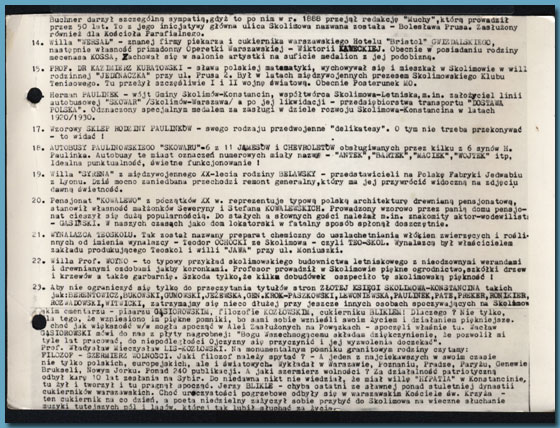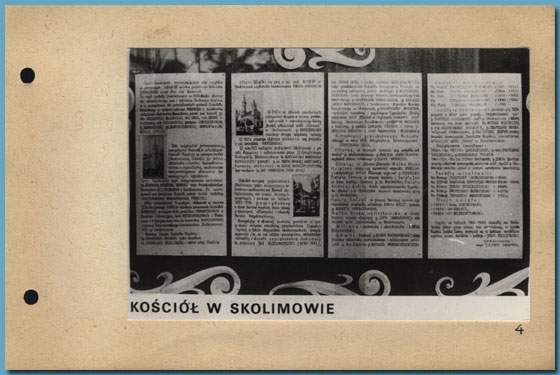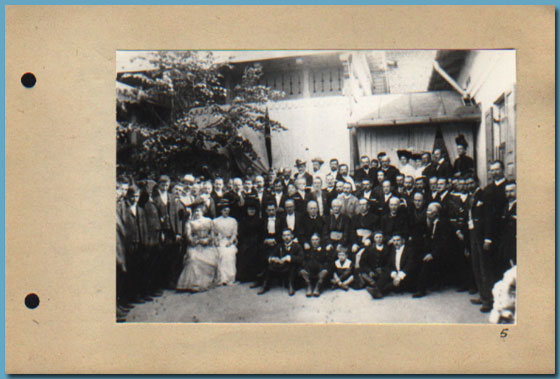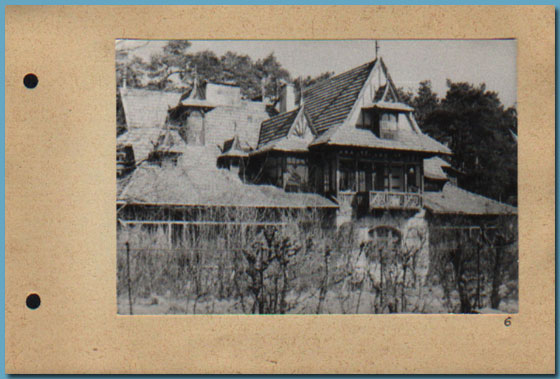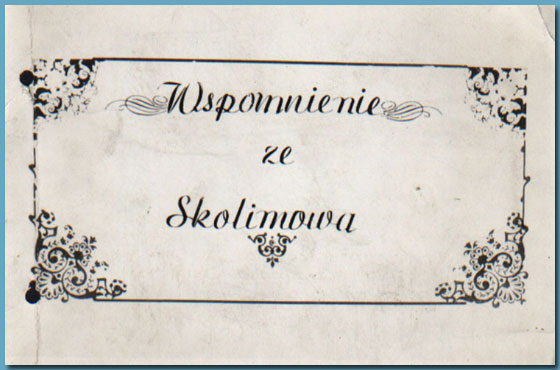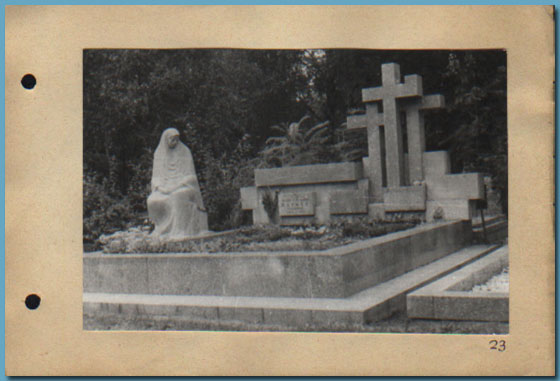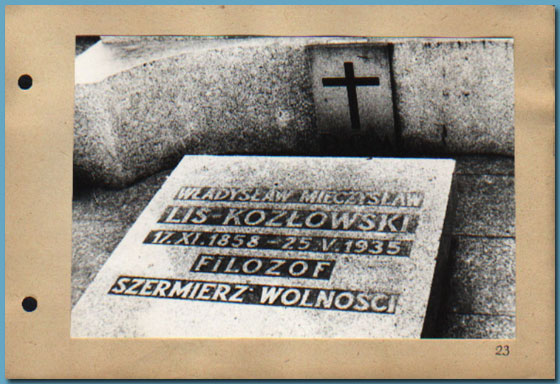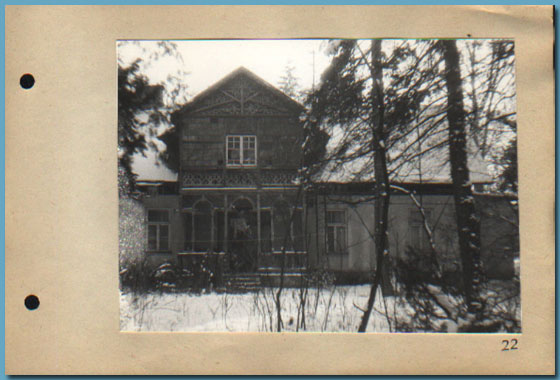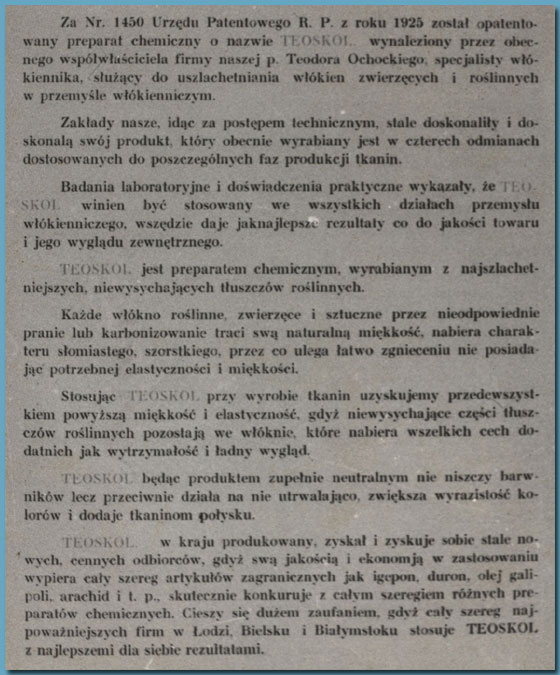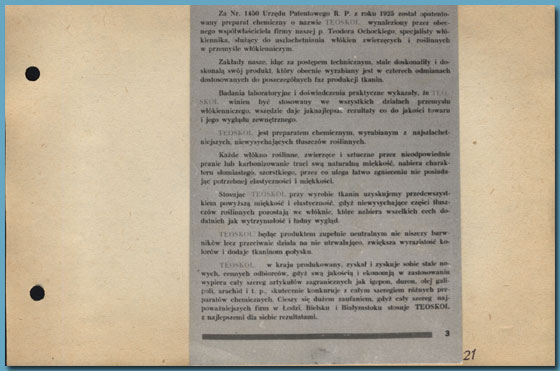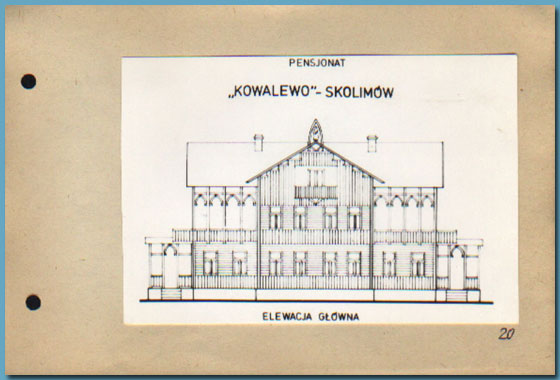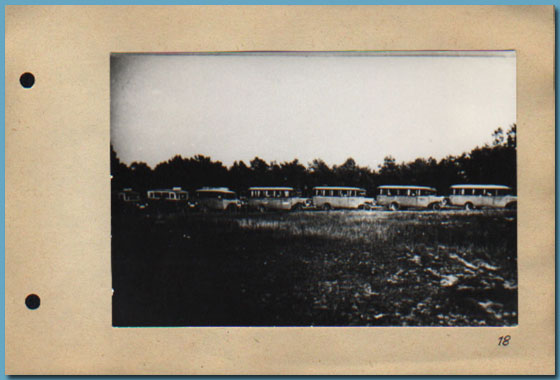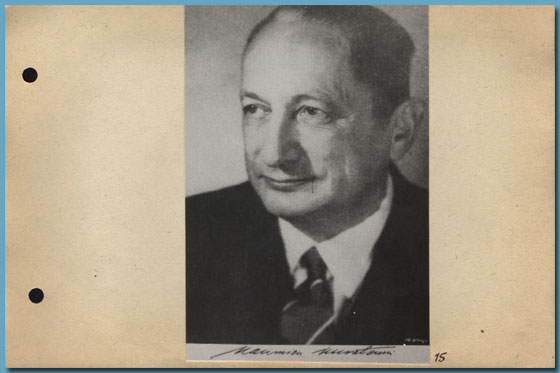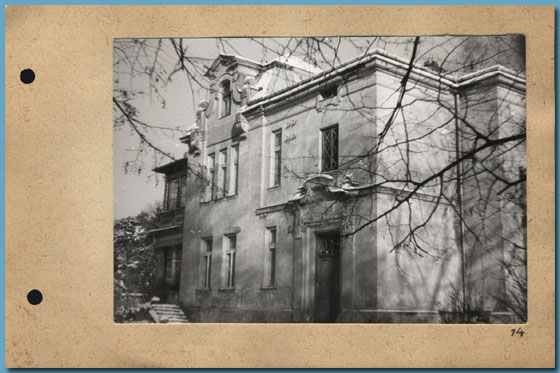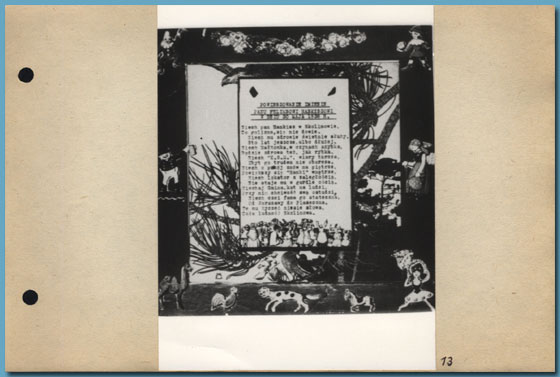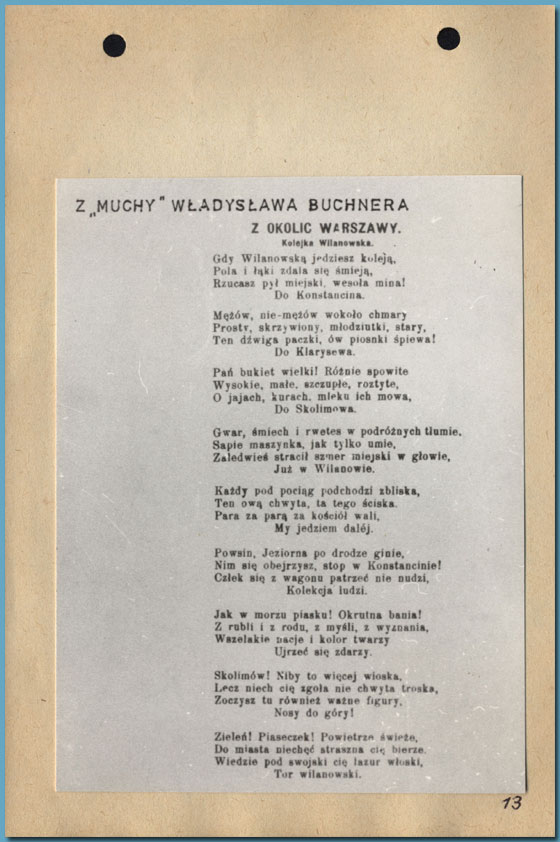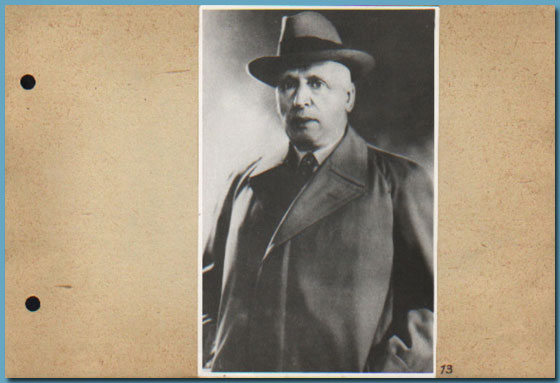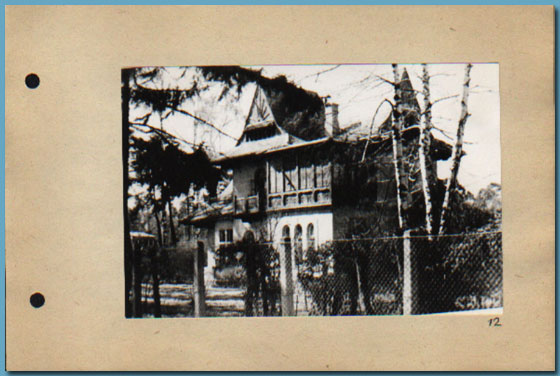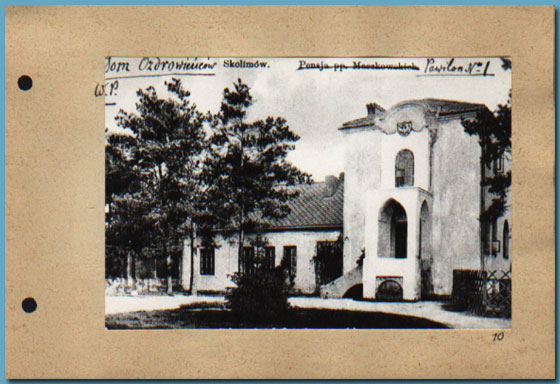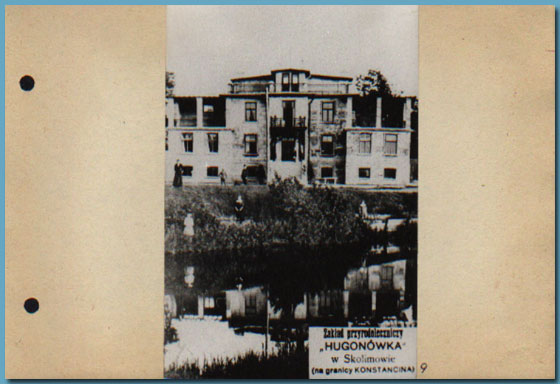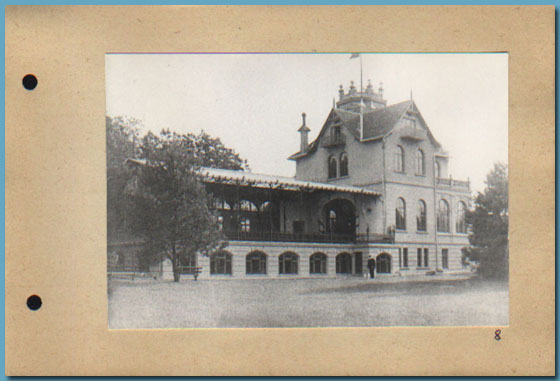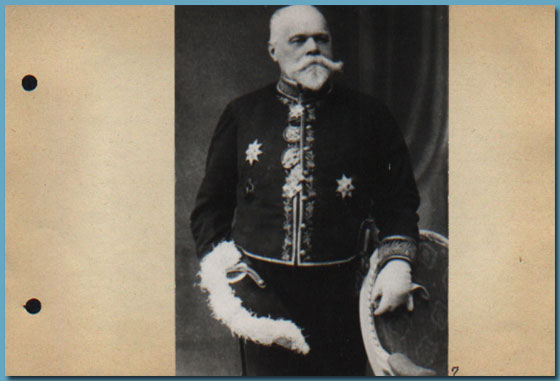Family souvenir – Poland – Józef Hertel, photo album “Memory from Skolimów”
Ladies and gentlemen,
I would like to ask for a small, nostalgic, private, photographic album about Skolimów made by Józef Hertl, dated 1986, which also contains a “Reminiscence of Skolimow” ending with the words:
“Let this modest memory contribute to the preservation of of this very familiar Skolimów in the grateful memory of his friends, so that they could tell each other -THER SKOLIMOW HAS NOT BEEN DEAD – WHILE WE LIVE.
Let this album remain in our common national memory as an example of Poles’ love for memories and the place where we live.
We hereby express our deepest respect to Mr. J. Hertel, thanking him for a moment and a tear of emotion.
It’s really very beautiful and important to share your memories with others – thank you to GA.PA.
M.M.W.
Home
Introduction: Józef Hertel
SKOLIMÓW
It once existed thanks to beautiful forests and the clean river Jeziorka as an oasis of someone’s happiness. The pedigree goes back to Skolim “- an Old Prussian knight from the 15th century, against the pine tree Jakoba Skolim was the name of Jurek, who was conquered from Vienna, first a prince’s village, a manor house, and then a summer resort.
Even the youngest part of Skolimów – the summer resort – is much older than Konstancin. At the end of the last century, numerous villas, summer houses, and in the first years of our century – a church, school, guesthouses, branches of the Warsaw Theological Seminary were created here like the proverbial mushrooms. The Skolimów-Chylice Society of Friends of Skolimów implements a rich program of development of Skolimów before World War I.
Skolimów with a predominance of Polish-Polish summer resort architecture – something from the combination of a country cottage with a manor house – earlier than Konstancin with stylish architecture based on foreign patterns, it pretends to be a health resort, among others through the operation of the first in its area before World War I Zakład Przyrodeczniczy “Hugonówka”, won the rights of the Skolimów-Konstancin Commune (1921), the rights of the city of Skolimów-Konstancin ‘(I952), and finally recognition of Konstancin as a health resort (1976) together with the award of the The National Council of the spa statute (1972).
Skolimów also has extremely valuable patriotic activities during the Nazi occupation.
In the new administrative division of the country in the 1970s, Skolimów is dominated by the marriage of Konstancin-Jeziorna and thus condemned to oblivion.
If you add to this with years, in the absence of due care, decaying trees and houses – you will have to repeat after someone that trees die standing, and for someone else, that similarly orphaned houses die along with their former owners or worthy heirs.
How can you resist this sad truth?
This humble memory will at least contribute to keeping this very HIS SKOLIMOW in the grateful memory of his friends, so that they can tell themselves – THERE ARE SKOLIMÓW DIDN’T – WHILE WE LIVE.
1. The Skolimowski Manor House from the end of the 17th century. It belonged to the Preker family, once the owners of the entire Skolimów region. The manor house was surrounded by a beautiful park, where festivities, folk games, and military and fire-fighting orchestras took place at one time. Currently the seat of the “Las” Cooperative.
2. Wacław PREKER – owner of the Skolimów Manor, creator of Skolimów-Letnisko, popular and respected town judge for Mokokotów, judge of peace for Skolimów and the surrounding area, founder of the plot under the Church and the “Skolimów” Veteran Actor’s House, author of many witty legal anecdotes immortalized among others . by Wiechai in the “Palester”. It rests in the Skolimowski Cemetery.
3. Until the outbreak of World War II, a historic building from the late 19th century of the Warsaw Metropolitan Curia was a branch of the Theological Seminary. Its rector in the first years of our century was Fr. Aleksander Kakowski, later cardinal and founder of the PARISH in Skolimów in 1923. After World War II – the famous Skolimów Junior High School. Today – MEDICAL VOCATIONAL STUDY,
4. THE ANGEL’S MOTHER OF GOD with His unknown and interesting story.
5. Participants of the dinner at the Skolimowska Inn “U OŁOWNI” after the celebration of the Consecration of the Church-Chapel in Skolimów in 1905. Local notables, founders, peasants, and among the clergy – Fr. Alexander KAKOWSKI
6. “JERYHONKA” – “JUTRZENKA” from 1902 by Samuel FROST – furniture supplier for the Royal Castle in Warsaw. One of the few monuments of classical Zakopane architecture in Skolimów-Konstancin.
7. HUGON SEYDEL – former Serbian Consul, today a legendary figure here: the owner of the CASTLE at ul. Sułkowski / formerly Parkowa / farm-gardens on the other side of the Jeziorka called “ZAGŁOBIN”, the Natural and Healing Institute “HUGONÓWKA”, Winery in Warsaw, co-shareholder of the Warsaw Philharmonic. The object of many fond memories.
8. HUGON SEYDEL CASTLE from the first years of the 20th century. It used to be an attractive cultural center for Skolimów-Chylice and Konstancin. In the vast park – deer, deer, peacocks, and on the island – an orchestra. Due to the fact that the owner belongs to the 7-person team of shareholders of the Warsaw Philharmonic, in the hall part of the castle, glazed, there were concerts of famous artists and performances of professional and amateur bands, as well as circuses, and charity raffles. There was also a winter garden here. Today, this part does not exist anymore.
9. Villa “HUGONÓWKA” – the former Institute of Natural Medicine of the consul Seydel. The common name today – “house under the devils” because of two fauns – satyrs, which once decorated it at the entrance.
10. School of Dr. MASZKOWSKI from 1906 to 1916. After regaining independence, it was assigned by the dr to the House of Healthcarers for the injured soldiers. Then, in the 1920s, as the villa “ZNICZ” – bought by the head of the village of Herman Paulinek, intended for the Public School. Today a tenant house. At the top of the building, facing the courtyard, there is a white eagle that has survived from 1906 until today!
11. The manor house “ZŁUDZENIE” was built at the end of the last century at the intersection of Kościeina Street to the Jeziorka river in a large park by a priest from a wealthy family. Who he was and why he placed the image of Prince Józef Poniatowski in the southern wall of the manor house with his words “God has entrusted me with the honor of Poles, and I will only give it to him personally”, it is not known. Was the manor house distinguished by its beautiful architecture built by Eng. Wolski – It is not certain. However, it is certain that he was the husband of Orsetti-an Italian woman – the buyer of the property from that priest. “Illusion” transforms into “MAGNOLIA” in order to become more real. Then, in the 1920s, “Magnolia” was purchased by Dr. Władysław Tadeusz SIERAMSKI with his wife Klementyna Teresa KORIN-PIOTROWSKA, it became a home of happiness and … sorrows.
12. Villa “MUCHA” – Władysław BUCHNER, the editor-in-chief and publisher of the famous satirical weekly “MUCHA”. For many years, Stefan KRZYWOSZEWSKI, a popular playwright and director of Warsaw’s City Theaters, lived under the same roof with Buchner’s family in the summer months. Here, too, OR-OT was cleanly hosted.
13. Bładysław BUCHNER – was associated with Skolimów from 1913 to 1939. It was here that he wrote such great poems by BUCHNER as: “Bolesław Prus”, “Wilanów Railway”, “Name Day Wishes for Feliks Hankisz”, reproductions of which below. Skolimów was immortalized in Buchner’s “Mucha” also with such satirical poems as “Noc w Skolimowie”. Bolesław Prus was especially fond of editors by Buchner, because it was after him that he took over the editorial office of Mucha in 1888, which he ran for 50 years. It was on his initiative that the main street of Skolimowa was called Bolesław Prus. Also of merit for the Parish Church.
14. Villa “WERSAL” – a well-known company of baker and confectioner in the Warsaw Hotel “Bristol” GWIZDALSKI, then the property of the Warsaw Operetta prima donna – Wiktoria KAWECKA. Currently owned by the family of patron KOSS. There is a medallion with her image on the ceiling in the artist’s salon.
15. PROF. DR KAZIMIERZ KURATOWSKI – fame of Polish mathematics, grew up and lived in Skolimów in the family villa “JEDYNACZKA” at ul. Prusa 2. was the president of the Skolimowski Tennis Club in the interwar period. Here he happily survived the First and Second World Wars. Currently, the MO Post.
16.HERMAN PAULINEK – mayor of the Skolimów-Konstancin commune, co-founder of Skolimów-Letniska, incl. founder of the bus line “SKOWAR” / Skolimów-Warsaw /, and after its liquidation – the transport company “DOSTAWA POLSKA”. He was awarded a special medal for merits in the development of Skolimów-Konstancin in the years 1920-1940.
17. Exemplary shop of the Pauline family – a kind of pre-war “delicatessen”. There is no need to convince about it – it shows!
18. Buses by PAULINOWSKI “SKOWAR” – 6 out of 11 JAMES and CHEVROLETs operated by several of the 6 son of H. Paulinek. Instead of numerical markings, these buses had names – “ANTEK”, “BARTEK”, “WACEK” etc. Perfect punctuality, great functioning.
19. Villa “SYRENA” from the interwar 20th anniversary of the BELAWSKY family – representatives of the LYON Silk Factory in Poland. Today, severely neglected, it is undergoing a general renovation, which is to restore it to the splendor shown in the photo.
20. The “KOWALEWO” guesthouse from the beginning of the 20th century represents a typical Polish wooden guesthouse architecture and was the property of the spouses, Seweryn and Stefan KOWALEWSKI. The guest house, run perfectly by the lady of the house, was very popular. One of the regular and famous guests was the excellent actor-vaudeville GASIŃSKI in our times, as a tenant house, it burned down to the ground.
21. Inventor of TEOSKOL – This is how the chemical preparation for refining animal and plant fibers was named after the inventor – Teodor Ochocki from Skolimów – that is TEO-SKOL. The inventor was the owner of the Teoskol production plant and the “JAWA” villa at ul. Moniuszko.
22. Willa Prof. WOYNO – is a typical example of Skolim’s summer cottage construction with indispensable porches and wooden ornaments like lace. The professor ran beautiful horticulture, tree and shrub nurseries as well as a tannery in Skolimów. It is a pity that a few extensions have disfigured this Skolim beauty
23. In order not to limit ourselves to just reading the titles of the pages of the GOLDEN SKOLIMOW-KONSTANCN BOOK, such as: Berentowicz, Bukowski, Gumowski, Jeżewska, Gen. KROK-PASZKOWSKI, Lewoniewska, Paulinek, Pate, Preker, Ronikier, Rozwadowski, Witwicki, let’s take a look a little longer with other people resting at the Skolw cemetery – the writer GĄSIOROWSKI, philosophies KOZŁOWSKI, confectioner BLIKEL! Why? Not only because beautiful monuments were erected for them, but because they themselves built more beautiful ones with their lives and activities. Although, like most of the above-mentioned, it could rest in Aleja Zasłużonych in Powązki – they rested here. Wacław GĄSIOROWSKI says to us from the tombstone: “I give thanks to Almighty God for allowing me so many years to work, to contribute to the independence of my homeland and to wait for its liberation”.
Prof. Władysław Mieczysław LIS-KOZŁOWSKI. On the monumental granite monument of the family, we read: -FILOSOF-SZERMIERZ Wolności. What philosopher should you ask? – And one of the most interesting in his time, not only Polish, European, but also international, he lectured in Warsaw, Poznań, Prague, Paris, Geneva, Brussels, New York. Pond 240 publications. And what freedom swordsman? He was sentenced to 10 years of exile to Siberia for his patriotic activity. Until recently, no one knew that he had the “HYPATIA” villa in Konstancin, he lived and created here and wanted to rest here.
Jerzy BLIKLE – probably the last of Sławna in over a hundred-year-old dynasty of Warsaw confectioners. Although the funeral ceremonies took place at the Church of St. Krzyża, this confectioner every day, and the Sunday poet wished to come to Skolimów to listen to the music of the local fields and forests, which he liked to listen to during his lifetime.
List of Photos 1
List of Photos 2


